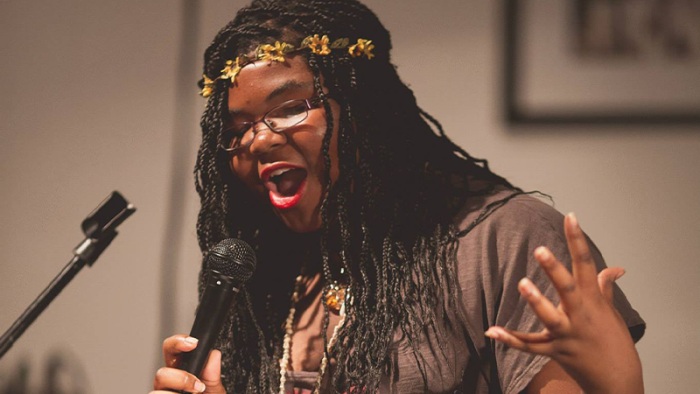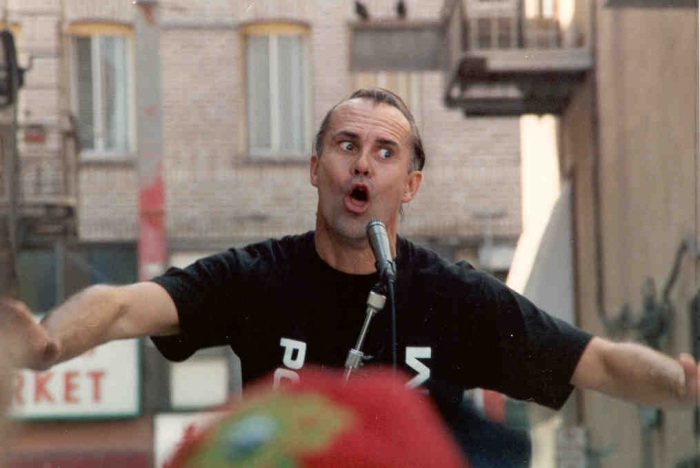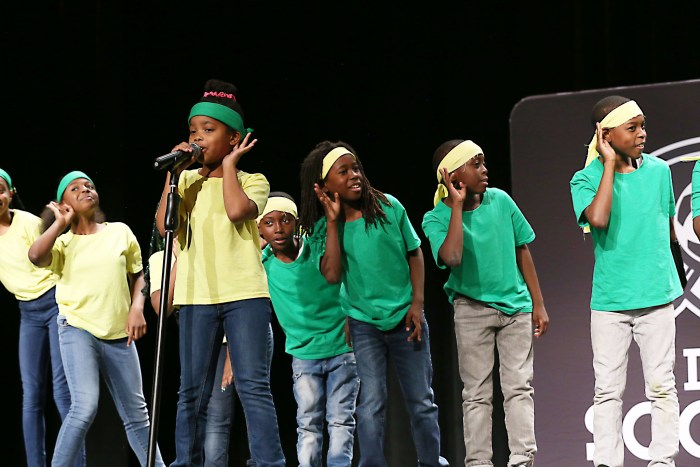Poetry has come a long way since Horatian odes and Shakespearean sonnets. While these types of poems can be a hard sell in the classroom, other forms might inspire a little more excitement. Our suggestion? Include slam poetry in your lesson plans! This unique performance art can really help you meet kids where they are and teach them that poetry is as relevant today as it was hundreds of years ago.
What is slam poetry?
Source: University of Nebraska-Lincoln
This spoken-word performance art seeks to bring a new life and excitement to poetry. Poets compose slam poems, then perform them in front of audiences at competitive events called poetry slams. They do more than just read their poem—they turn it into a high-energy performance with movement, storytelling, and other theatrical elements. The author may perform on their own or with a larger group.
Slam poems are specifically written to be performed. The topics are often diverse, political, and thought-provoking. Slam poets want their audiences to feel an emotional response, whether positive or negative. Cheers and calls fill the room as the audience expresses their opinions, making the experience interactive for everyone.
Do poetry slams have rules?
Though different events may set their own rules, here are some of the common guidelines of slam poetry.
- Any style of poetry is acceptable, but the author generally must be involved in performing their own poem.
- There’s no need to memorize your poem, though many do. Poets are welcome to use notes on paper or in digital form.
- Poem performances are usually limited to three minutes or less.
- No props or costumes are allowed, although you may dress in a way that matches the theme or mood of your poem.
- Performances cannot include pre-recorded music or sound effects or musical instruments. However, the performer is welcome to add their own sounds by beatboxing, singing, clapping, or using their body in other ways.
How are competitions judged?
Poetry slams are often judged competitions, each with its own rules. Usually a panel of judges is chosen in advance. They may be people with expertise in poetry, or they could just be people from the audience. The judges award scores, often on a scale of 1 to 10. (In some competitions, they drop the highest and lowest scores.) These individual scores are added together to give a final score. The highest score wins the competition.
How did slam poetry start?
Source: Marc Kelly Smith
In the 1960s, beat poets like Jack Kerouac and Allen Ginsberg introduced a new performance style that caught on with the younger crowd. In the 1980s, a man named Marc Kelly Smith took that concept and brought it a new audience. He was a Chicago poet who wanted shake up the stuffy, academic image of poetry, making it more accessible to everyone. The first National Poetry Slam took place in 1990, and the medium has remained popular ever since.
What are some examples of slam poetry?
The best way to understand slam poetry is to see it in action. These three amazing examples are a terrific place to start. Looking for more? See our list of 25 terrific slam poetry examples here.
Disorder
Sixteen-year-old Chris Loos uses his slam poem to express what it feels like to live with ADHD, OCD, and other “mental disorders.” This powerful piece will speak directly to other students like him. Plus, it will open the minds of those who can’t imagine what it feels like to live this way every day.
Somewhere in America
Anger, despair, and fear pour out through the words in this powerful performance. Belissa, Rhiannon, and Zariya ask important questions about American values with an intensity that draws in every viewer. This one is written and performed by kids, but it addresses adult-level topics.
My Honest Poem
What starts out as a list of facts turns into a deeper look at identity. Rudy Francisco’s poems are powerful but relatable, and many of them are great for the classroom.
Why should I use slam poetry with my students?
If your kids roll their eyes when you embark on a poetry unit, try including slam poems in your curriculum. This genre really turns student expectations upside down! Here are a few reasons you should be teaching it.
- Slam poetry is diverse and inclusive. Poetry slams draw people of all types, and students are more likely to see themselves represented.
- The experience is interactive, for both poets and the audience. Kids often think of poetry as quiet and boring, and poetry slams are anything but!
- It gives students a way to explore emotional and intense topics. Many slam poems address political or social themes, encouraging students to tap into their emotions and consider others’ point of view.
- Slam poetry engages multiple learning styles. Reading, writing, performance, storytelling, discussion, and more … it’s all here.
- It’s fun! Seriously, this is like nothing kids have seen before.
How do I hold a poetry slam?
Source: DC Scores
Thinking of holding your own slam? Go for it! Just remember that not all students are comfortable performing in front of their peers. Plus, be sure to offer some guidance to the audience on constructive ways to offer their feedback. These resources can help.




